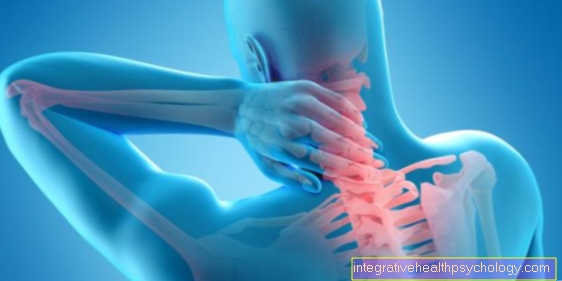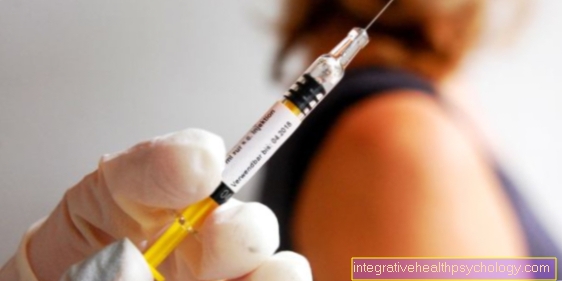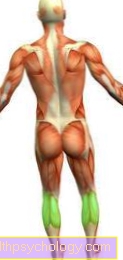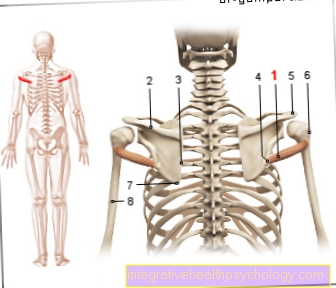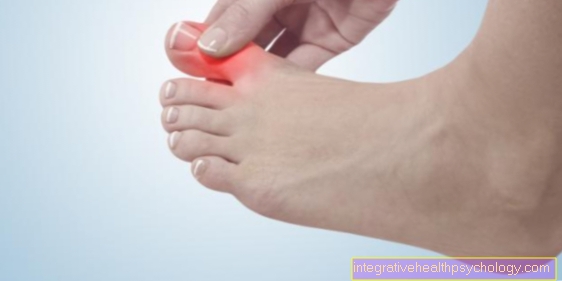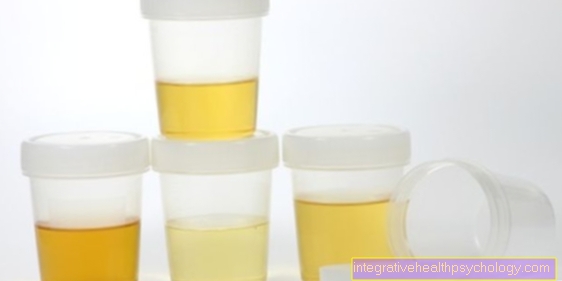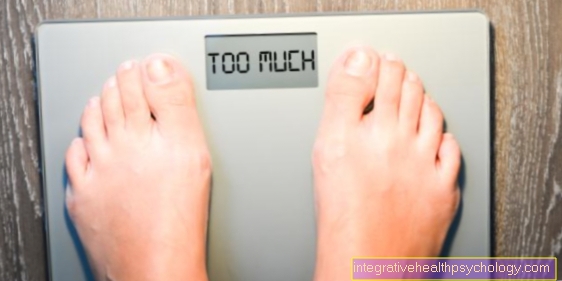Diet for short bowel syndrome
introduction

The nutritional therapeutic options Intestinal surgery depend both on the time after the operation and on the extent and location of the operation.
Up to one 50% removal of the small intestine After some time of adaptation, the rest of the intestine can usually ensure the digestion of the nutrients. The more small intestinal tissue is removed, the more likely there is a lack of nutrients, energy and water.
Missing 75% of the small intestine this deficiency is serious. With a remaining length of 30 to 50 cm, parenteral (with the help of an infusion) are fed.
The decisive factor is which part of the small intestine was removed. For example, in the End of the small intestine (terminal ileum) reabsorbs the bile salts. If a part is missing, bile salts enter the Large intestine over, they inhibit the withdrawal of water through the intestinal wall and diarrhea occurs (chologic diarrhea).
In addition, more bile salts are excreted and the resulting deficiency disrupts fat digestion and leads to Fatty stools and lack of energy. In addition, more fatty acids remain in the intestinal lumen and can get along with them Calcium combine to form insoluble lime soaps. Calcium Also combines with the oxalic acid from food to form water-insoluble calcium oxalate. If less calcium is available, more oxalic acid is absorbed by the intestinal wall and there is a risk of stone formation (Oxalate stones) in the urinary tract. In addition, an increased bile salt concentration probably increases the absorption of oxalic acid. Oxalic acid-rich foods should therefore be avoided (Swiss chard, rhubarb, Spinach, cocoa, beetroot, parsley). Preventive against Kidney stones A sufficient fluid intake of 1.5 to 2 liters per day is also effective.
If necessary, the usual Fats up to 75% through MCT fats replaced. This can contribute to a significant improvement in the nutritional status. The lower part of the small intestine has to be removed Vitamin B12 be administered via medication. Since fat digestion is often disturbed, it is also important to ensure that there is an adequate supply of fat-soluble vitamins. Drinking fluids during the meal accelerates the passage of the porridge through the stomach and small intestine and thus worsens the absorption of nutrients. To avoid this, it is recommended to drink 1 hour after eating.
Diet recommendations
From a residual length of the small intestine of 30 to 50 cm, permanent artificial feeding via infusion. From a remaining length of the small intestine of 60 to 80 cm after the operation, start eating as soon as possible in the form of light whole foods. So-called formula diets can also be used on their own or in combination with a normal diet at first. These are nutrient concentrates in liquid form that are easily absorbed in the digestive tract.
- Frequent small meals, chew well.
- Immediately after the operation initially Avoid lactose, later gradually test tolerance.
- Prefer easily digestible, high-carbohydrate foods with a low fiber content.
- Only drink something 1 hour after each meal.
- In case of fat stools, reduce the daily fat intake and, if necessary, replace 50 to 75% of the dietary fat with MCT fats.
- After removing the end of the small intestine, give vitamin B 12.
- As required fat-soluble vitamins for example in tablet form.
Daily example of a menu for short bowel syndrome
- Reduced fat, use of MCT fats, without dairy products
1. Breakfast
- 60 g toast, 15 g MCT margarine, 20 g jam, 20 g honey
1. Snack
- 45 g rolls, 3 g MCT margarine, 30 g turkey breast
2. Snack in between
- Carrot mix drink: 250 ml carrot juice, 30 g melted flakes
Having lunch
- Steamed haddock, vegetables, parsley potatoes, pear compote
- 100 g haddock, 10 g lemon juice, salt, 5 g MCT cooking oil
- 100 g zucchini, 100 g carrots, 5 g MCT cooking oil
- 150 g boiled potatoes, chopped parsley
- 150 g pear compote, 3 shortbread biscuits
Snack in between
- 45 g mixed rye bread, 5 g MCT margarine, 40 g corned beef, 50 g mustard cucumber
dinner
- 80 g mixed wheat bread, 15 g MCT margarine
- Meat salad: 80 g cold roast, 50 g each of canned asparagus and pineapple, spices, a little vinegar and 5 g rapeseed oil (to improve the linoleic acid supply)
Late meal
- 45 g toast, 30 g poultry sausage
- Drink between meals.
MCT fats and their use are described in detail in the chapter "Condition after gastric surgery".
With this type of diet, the need for unsaturated and polyunsaturated fatty acids is not guaranteed. In addition, the lack of dairy products means that the calcium requirement is not met. Plan calcium-rich mineral waters! Lactose sugar is usually tolerated again some time after the operation. Essential fatty acids can also be given in capsule form. The aim is to make the transition to light whole foods as quickly as possible in order to avoid malnutrition.
This diet plan contains on average: 90 g protein, 60 g fat (of which 32 g MCT fat), 350 g carbohydrates and 2500 kcal.



